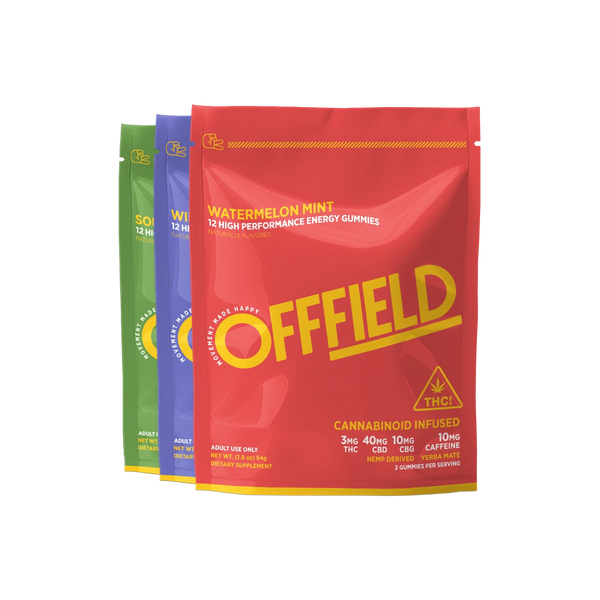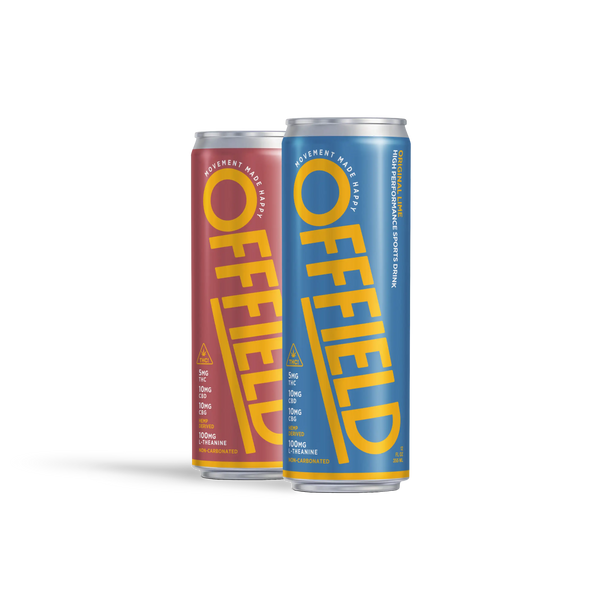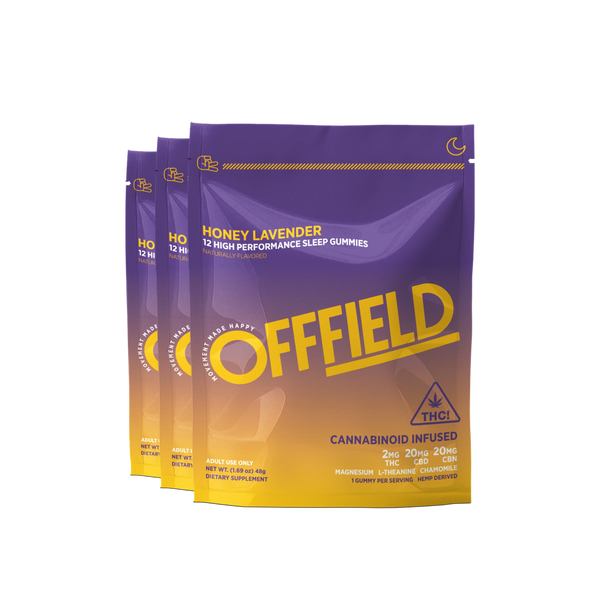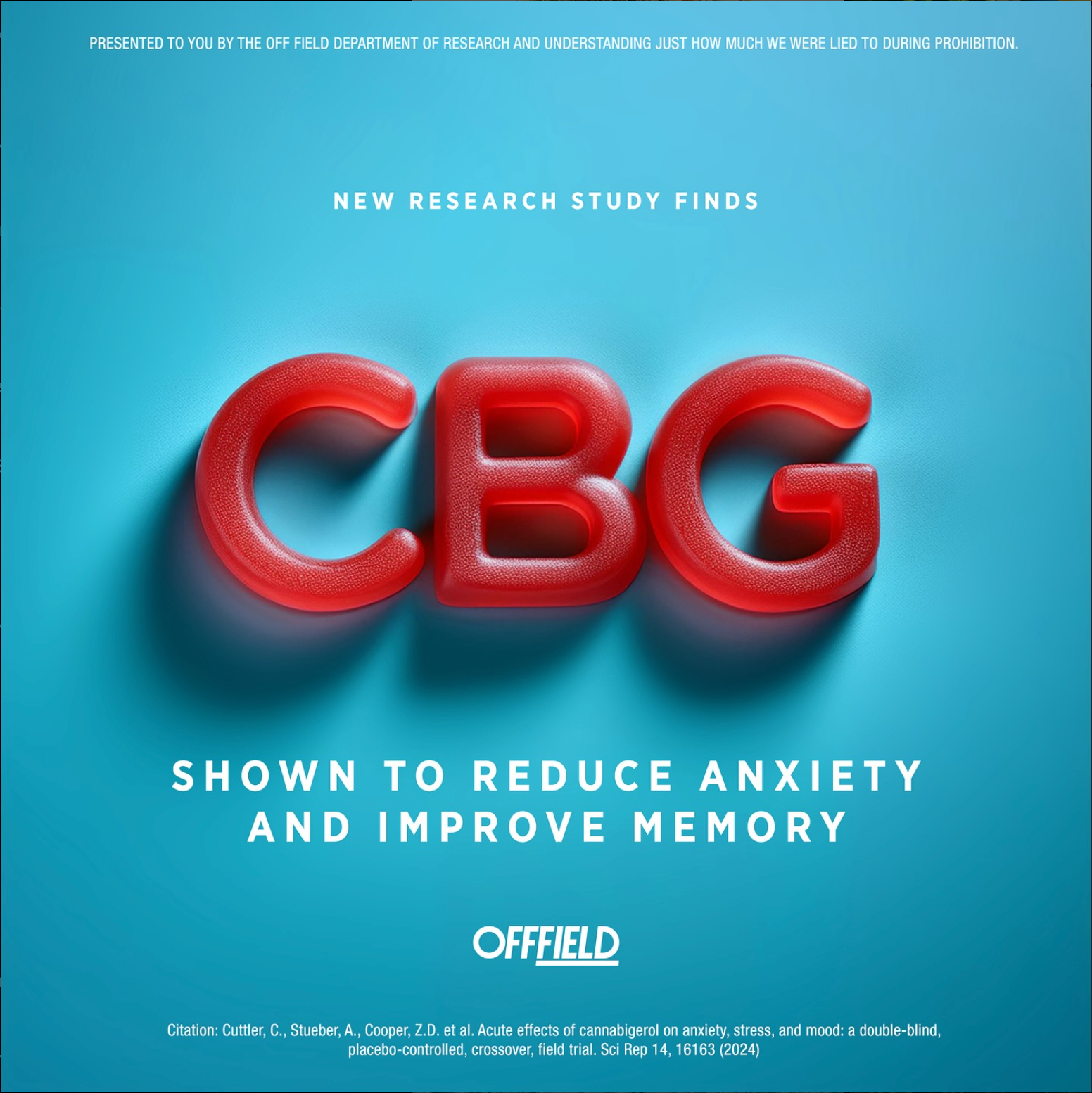LIMITED TIME OFFER - SAVE $25 AND FREE SHIPPING

What are you interested in trying?

GUMMIES

DRINKS
The science of cannabinoids offers deeper insight into our body’s functions. Leading scientific research from around the world has shown that cannabinoids are integral to performance by accessing and regulating the endocannabinoid system (ECS). It is the foundation of our approach.
They didn’t teach us this in high school.
The
Science of
Cannabinoids
on Human
Performance
The ECS has been found to be a primary regulator of mood, pain and performance during exercise.
For some time, endorphins were believed to cause the euphoric effect of rigorous exercise, commonly referred to as the ‘runner’s high,’ ‘exercise high,’ or ‘feeling in the zone.' Although this theory was made popular, it was never actually proven. The issue was that Endorphins are unable to pass the blood-brain barrier, making it impossible for them to lower inflammation which is a known and visible result of the Exercise High.
Recently, scientists have explored the Endocannabinoid System (ECS) as a potential regulator of exercise. The results were stunning! Not only was the ECS the primary cause for the Exercise High, able to both cause the euphoric effect similar to Endorphins but also proven to help lower inflammation (1). Further studies corroborated these findings, making Cannabinoids the official molecule of the Exercise High.
Unlike opioids, exogenous Cannabinoids are abundant and much safer for consumption. Allowing you to self regulate your ECS to optimize your performance.
Cannabinoid receptors, CB1 and CB2, regulate mood, pain, inflammation, and recovery. They interact with both naturally produced endocannabinoids and hemp-derived cannabinoids to maintain balance in the body.
CB1 receptors are primarily in the brain and nervous system. When activated by anandamide, they influence dopamine release, pain perception, and stress response, leading to effects like the runner’s high and reduced discomfort during exercise.
CB2 receptors are are present in immune cells and muscle tissues. They help reduce inflammation, support recovery, and regulate immune function, minimizing soreness and swelling after intense workouts, which aids endurance and performance.
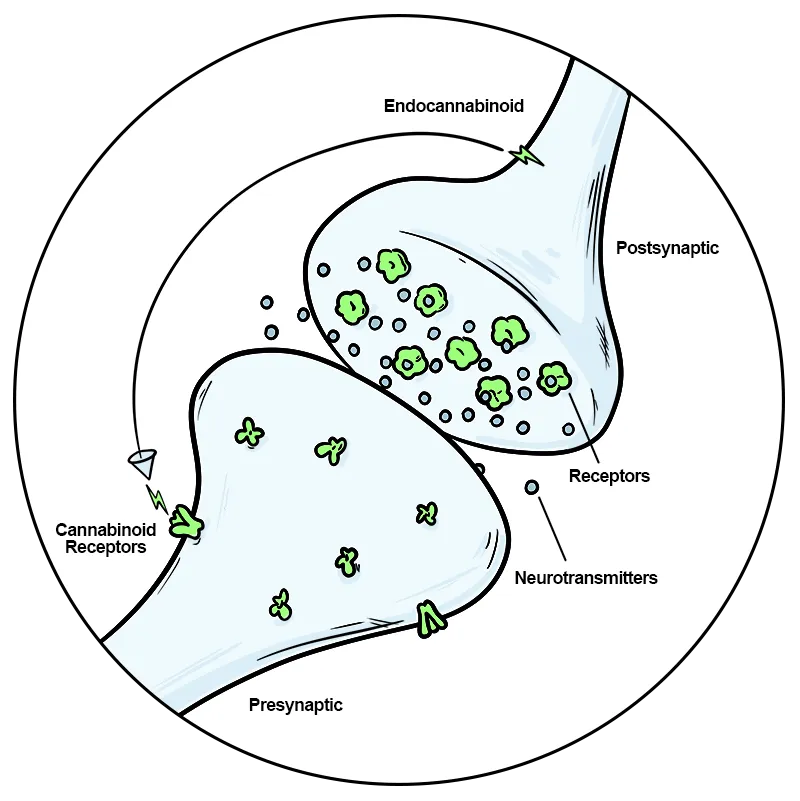

Fig. 1 - CB1 receptors influence dopamine release, pain perception, and stress response during exercise.
The Endo-canna-binoid System (ECS)
It's a mouth full, but the ECS is a key regulator of our mind and body. Much like your nervous system, it spans from your head all the way to your toes. The ECS is an integral part of homeostasis and a connection point between mind and muscle during exercise.

Brain: Runner’s High & Mood Regulation
Anandamide binds to CB1 receptors in the brain, elevating dopamine and serotonin levels. This creates a feeling of euphoria, reduces anxiety, and enhances focus.
Muscles: Inflammation Reduction & Recovery
CB2 receptor activation in muscle tissue reduces inflammation and oxidative stress, promoting faster recovery and reducing soreness after intense exercise.
Cardiovascular System: Blood Flow & Endurance
Anandamide influences vasodilation, improving oxygen delivery to muscles and enhancing endurance performance during prolonged exercise.
Immune System: Anti-Inflammatory Effects
CB2 receptors in immune cells help regulate inflammation, preventing excessive immune response that could lead to joint stiffness.
Digestive System: Gut Health & Energy Balance
Endocannabinoids modulate digestion and nutrient absorption, helping maintain energy balance during endurance activities while reducing gut distress.
Nervous System: Pain Modulation & Stress
2-AG activates CB1 receptors along the spinal cord and peripheral nerves. This blocks pain signals, helping runners push through while maintaining endurance.
What are cannabinoids?
There are two main types of cannabinoids: endogenous cannabinoids (produced naturally within our bodies) and exogenous cannabinoids (introduced from outside sources, such as cannabis, which contains phytocannabinoids)
Cannabinoids are natural compounds that interact with the body’s ECS, which helps regulate mood, pain, inflammation, sleep, and overall balance. They can come from two sources: our bodies or plants. The most well-known plant-derived cannabinoids (phytocannabinoids) include THC, CBD, and CBN, found in cannabis and hemp.
The ECS works by producing its own cannabinoids (endocannabinoids) that bind to receptors throughout the body, helping maintain homeostasis. When phytocannabinoids are introduced, they interact with these same receptors, enhancing or mimicking the body’s natural processes. This is why cannabinoids can help with pain relief, relaxation, and recovery.
Endocannabinoids and phytocannabinoids share similar functions but come from different sources. Endocannabinoids are produced internally, while phytocannabinoids come from plants. Both play a role in regulating key functions, supporting balance, and improving overall well-being.
100 years of prohibition. Thousands of years of understanding.
For thousands of years, people have used cannabinoids for pain relief, relaxation, and overall wellness. Ancient civilizations, from China to Egypt, documented cannabis as a natural remedy for sleep, inflammation, and stress. It was widely accepted in medicine until the early 20th century when political and racial motives, not science, led to prohibition. Only recently has research reaffirmed what humans have long known—cannabinoids support health, balance, and recovery, making their return to mainstream wellness both necessary and long overdue.
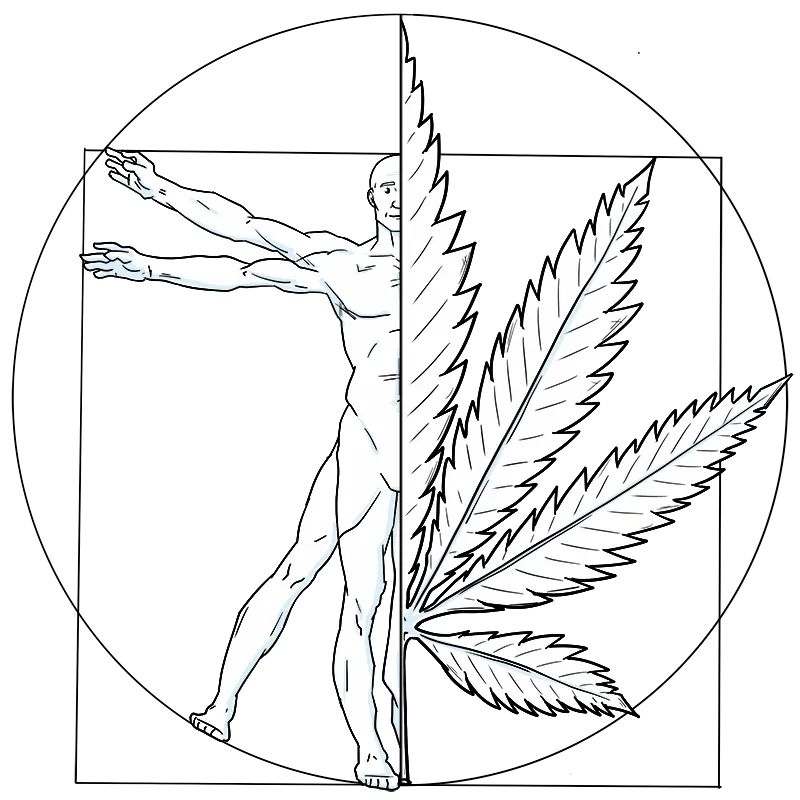
Fig. 2 - The balance between exogenous and endogenous cannabinoids.
Each
cannabinoid
serves
a purpose.
While phytocannabinoids were first discovered in the 1940s, with THC isolated in 1964, the first endocannabinoid, anandamide (AEA), was discovered in 1992. These discoveries helped reveal the endocannabinoid system (ECS) as a crucial part of human physiology. Over 120 cannabinoids have since been identified. Modern technology like chromatography and mass spectrometry accelerates their discovery. Today, advanced research methods usher in a new era, revealing how cannabinoids interact precisely with the body’s endocannabinoid system to enhance wellness.

Phytocannabinoids
THC Tetrahydrocannabinol is believed to enhance focus, reduce pain, boost endurance, aid recovery, and induce euphoria. THC enhances the entourage effect, amplifying the effect of other cannabinoids.
CBG Cannabigerol is non-psychoactive, believed to reduce inflammation, enhance focus, support endurance, relieve pain, and accelerate recovery. CBG was found to improve memory and reduce anxiety.
CBD Cannabidiol is non-psychoactive, reduces inflammation, relieves pain, supports endurance, aids recovery, and promotes relaxation.
CBN Cannabinol promotes deep sleep, reduces restlessness, and enhances recovery. It is a well documented all natural sleep aide molecule.
CBC Cannabichromene may reduce inflammation, relieve pain, improve mood, support brain health, and promote overall wellness.
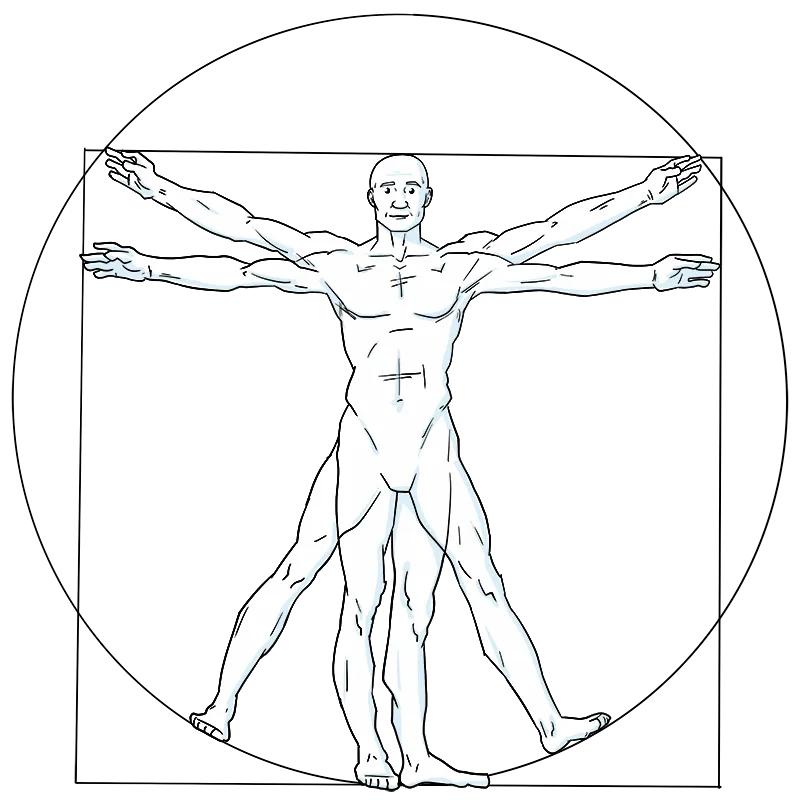
Endocannabinoids
AEA Anandamide regulates mood, pain, appetite, and stress (often called the “bliss molecule”). Responsible for the natural effects of the Exercise High.
2-AG 2-Arachidonoylglycerol influences immune function, inflammation, and neuroprotection.
2-O-ARA-GLY Noladin Ether is less studied but believed to interact with CB1 receptors.
OAE Virodhamine acts as a CB1 receptor antagonist and CB2 agonist, modulating cardiovascular and metabolic processes.
PEA Palmitoylethanolamide modulates pain and inflammation but primarily affects PPAR receptors rather than CB1/CB2.
OEA Oleoylethanolamide regulates appetite and metabolism, also interacting with PPAR-alpha.
Will it
work
on you?
We’re all unique, so understanding how your body works is the key to achieving the best results.
In a world of screens and stress, daily movement is one of the simplest ways to feel better—physically and mentally. Whether it’s a walk, a stretch, or a full workout, regular exercise boosts energy, improves sleep, and reduces anxiety. The key is enjoyment. Finding movement you love makes consistency easier, turning effort into habit. For beginners, enjoyment builds routine; for professional athletes, it sustains the rigorous demands of training. In America, where stress and chronic illness are common, making movement enjoyable isn’t just fitness—it’s self-care. Small, consistent efforts create a healthier, happier life, one step at a time.
Everyone’s body responds differently to cannabinoids—some need more, others less. Just like pacing a run, finding the right amount is about listening to your body. Studies show low-dose cannabinoids are well-tolerated, with minimal side effects. Research supports their safety for sleep, stress, and recovery, making them a natural alternative to harsher medications. Start low, adjust gradually, and discover what helps you feel your best.
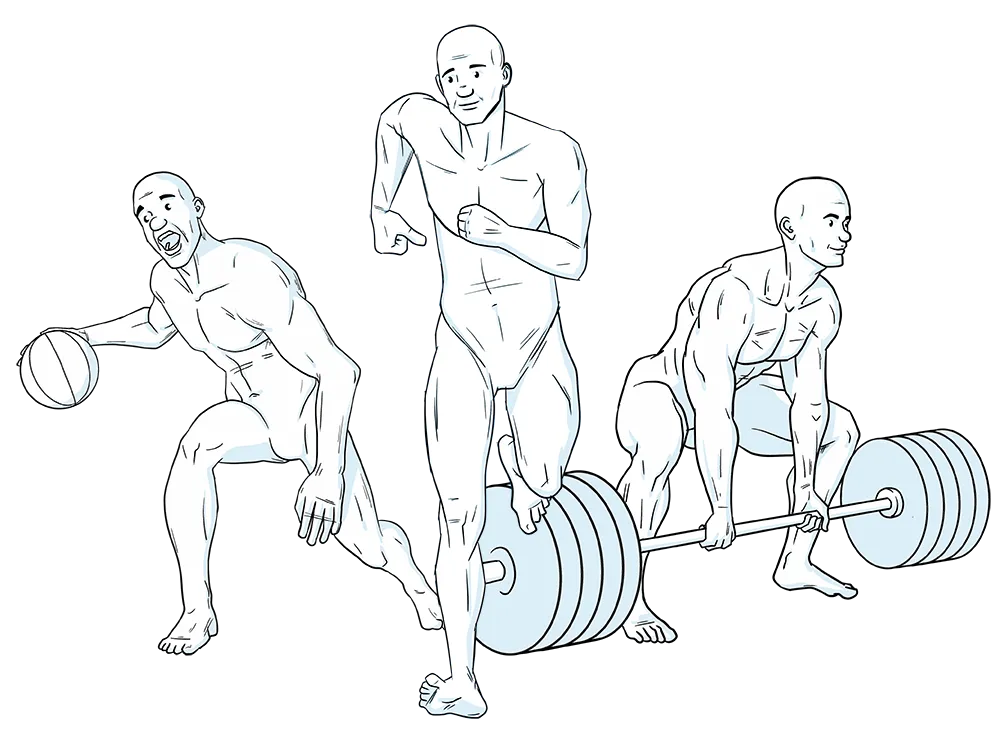

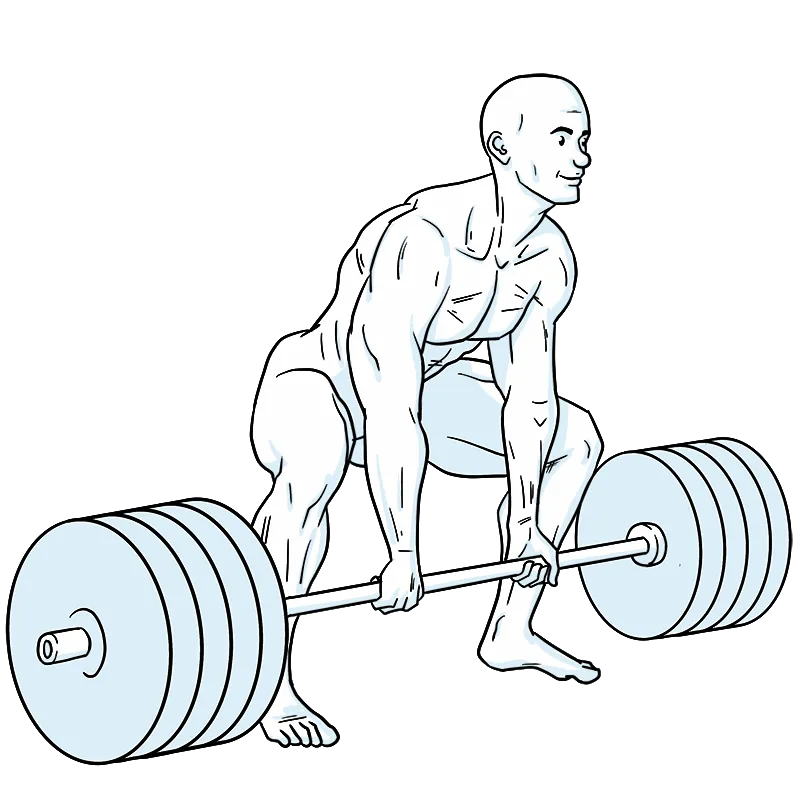

High Performers
Health-conscious biohackers use cannabinoids to optimize recovery, reduce inflammation, and enhance focus, integrating them into their routines like supplements or adaptogens. By fine-tuning dosage and timing, they leverage cannabinoids to support sleep, stress resilience, and overall performance without reliance on synthetic alternatives.


Pro Athletes
Athletes use cannabinoids to support muscle recovery, reduce inflammation, and manage stress, helping them train harder and recover faster. By incorporating low-dose THC, CBD, or CBN, they optimize sleep, endurance, and focus, naturally enhancing performance without the side effects or long term damage of traditional painkillers or sleep aids.


Late Bloomers
People just starting their health journey use cannabinoids to ease stress, improve sleep, and support recovery, making it easier to stay consistent with movement and wellness. By reducing discomfort and enhancing relaxation, they begin to enjoy exercise for the first time, transforming it from a chore into something they genuinely look forward to.

Precision testing changes everything.
Deregulation of cannabinoids doesn’t mean less testing—it means more. As restrictions lift, companies can now invest in rigorous third-party testing, ensuring purity, potency, and safety at levels never before possible. Unlike the unregulated past, where black-market products had unknown dosages and contaminants, today’s legal market thrives on transparency and accountability.
With modern technology, precision dosing is now standard, allowing users to tailor cannabinoids to their needs—whether for sleep, focus, or recovery. This level of control and quality was unheard of just decades ago.
There has never been a better time for cannabinoid-enhanced products. Innovation, safety, and consumer choice are at an all-time high, making it easier than ever to find effective, high-quality formulations that fit individual lifestyles.
Key studies at the intersection of cannabis research and human performance.
Research has been held back by federal restrictions, but the evidence is clear—cannabinoids offer real benefits. We advocate for deregulation to unlock the full potential of scientific discovery and move beyond outdated stigmas that have shaped perceptions for far too long.

